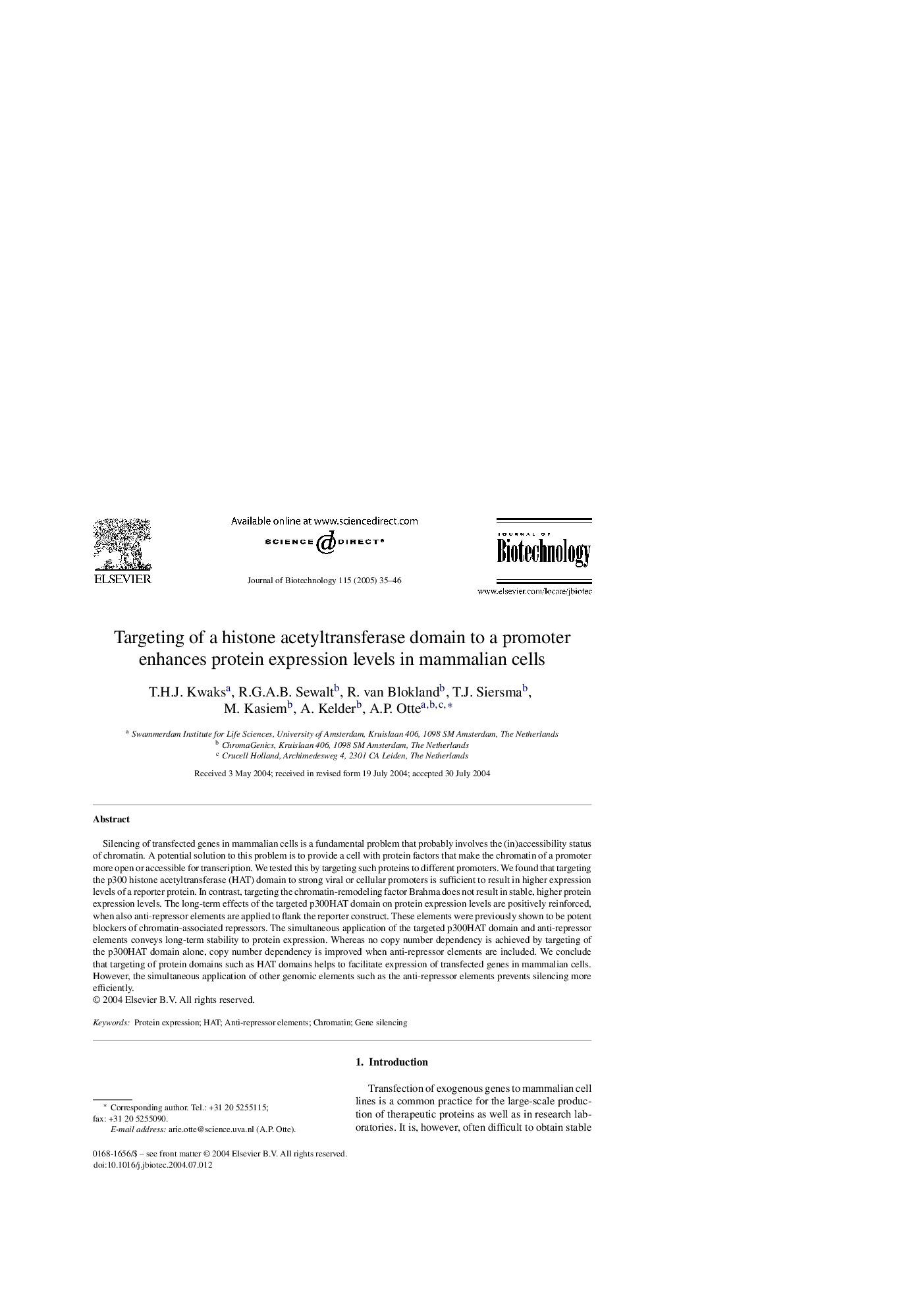| Article ID | Journal | Published Year | Pages | File Type |
|---|---|---|---|---|
| 9604500 | Journal of Biotechnology | 2005 | 12 Pages |
Abstract
Silencing of transfected genes in mammalian cells is a fundamental problem that probably involves the (in)accessibility status of chromatin. A potential solution to this problem is to provide a cell with protein factors that make the chromatin of a promoter more open or accessible for transcription. We tested this by targeting such proteins to different promoters. We found that targeting the p300 histone acetyltransferase (HAT) domain to strong viral or cellular promoters is sufficient to result in higher expression levels of a reporter protein. In contrast, targeting the chromatin-remodeling factor Brahma does not result in stable, higher protein expression levels. The long-term effects of the targeted p300HAT domain on protein expression levels are positively reinforced, when also anti-repressor elements are applied to flank the reporter construct. These elements were previously shown to be potent blockers of chromatin-associated repressors. The simultaneous application of the targeted p300HAT domain and anti-repressor elements conveys long-term stability to protein expression. Whereas no copy number dependency is achieved by targeting of the p300HAT domain alone, copy number dependency is improved when anti-repressor elements are included. We conclude that targeting of protein domains such as HAT domains helps to facilitate expression of transfected genes in mammalian cells. However, the simultaneous application of other genomic elements such as the anti-repressor elements prevents silencing more efficiently.
Related Topics
Physical Sciences and Engineering
Chemical Engineering
Bioengineering
Authors
T.H.J. Kwaks, R.G.A.B. Sewalt, R. van Blokland, T.J. Siersma, M. Kasiem, A. Kelder, A.P. Otte,
